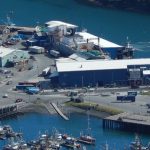Pollock trawlers are now in a fix as Federal regulators have proposed to cap on the number of king salmon that pollock trawlers can accidently kill in the Gulf of Alaska. As per the information the proposed limit of 22,500 is less than half of last year’s bycatch of 51,000 kings but more than the eight-year average of 19,000 taken by commercial pollock fishermen pursuing the low-cost whitefish that end up as frozen fish sticks in freezers across America.
The proposed cap is known as the preliminary preferred alternative. It is the mid-range number considered by the North Pacific Fishery Management Council at its meeting in Anchorage. The smallest cap was 15,000 kings; the largest was twice that. Theresa Peterson, a 30-year commercial fisherman and member of the Alaska Marine Conservation Council, said that the decision of the council is praiseworthy as it would limit Chinook bycatch at a time when king salmon returns are so low.
Experts said that Pollock fishing in the Gulf of Alaska is far smaller than the billion-dollar industry in the Bering Sea. The recommended allowable pollock catch for the Bering Sea in 2011 is about 1.25 million metric tons — compared to just 96,000 tons for the Gulf. As a result, they take their catch to on-shore processors instead of processing the fish at sea. That means a pollock fishing vessel in the Gulf doesn’t necessarily know how many salmon it has caught until processing, making it more difficult to avoid roving salmon hot spots.








